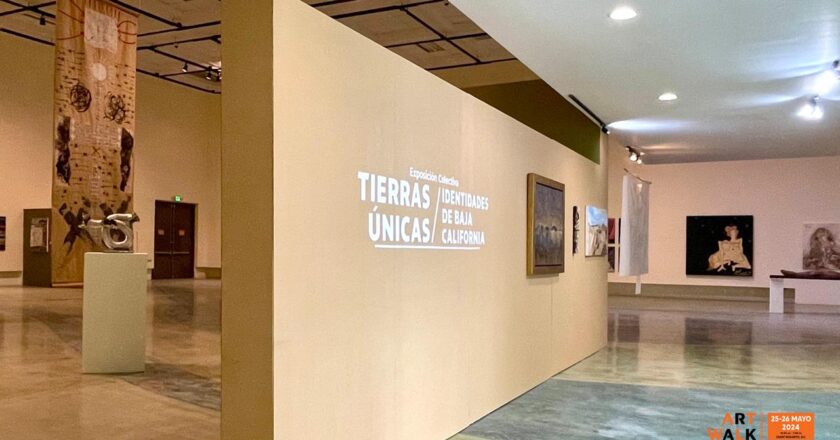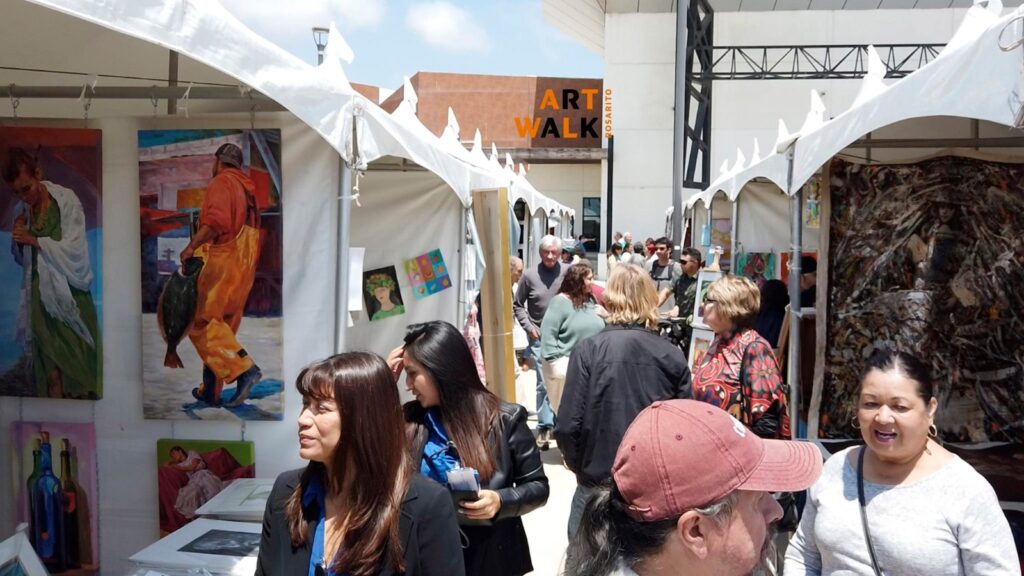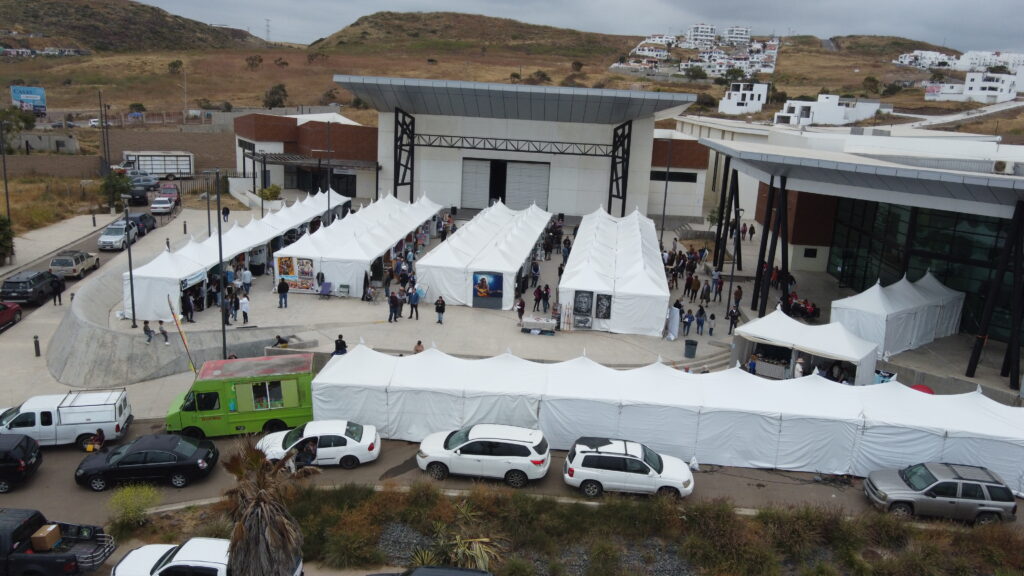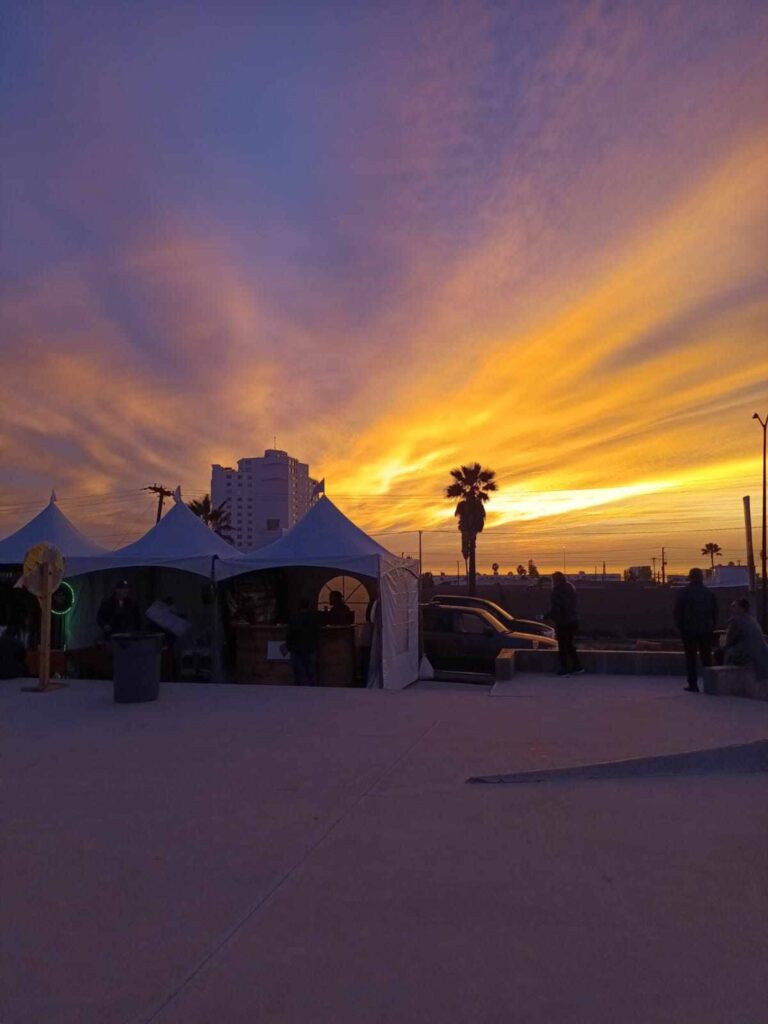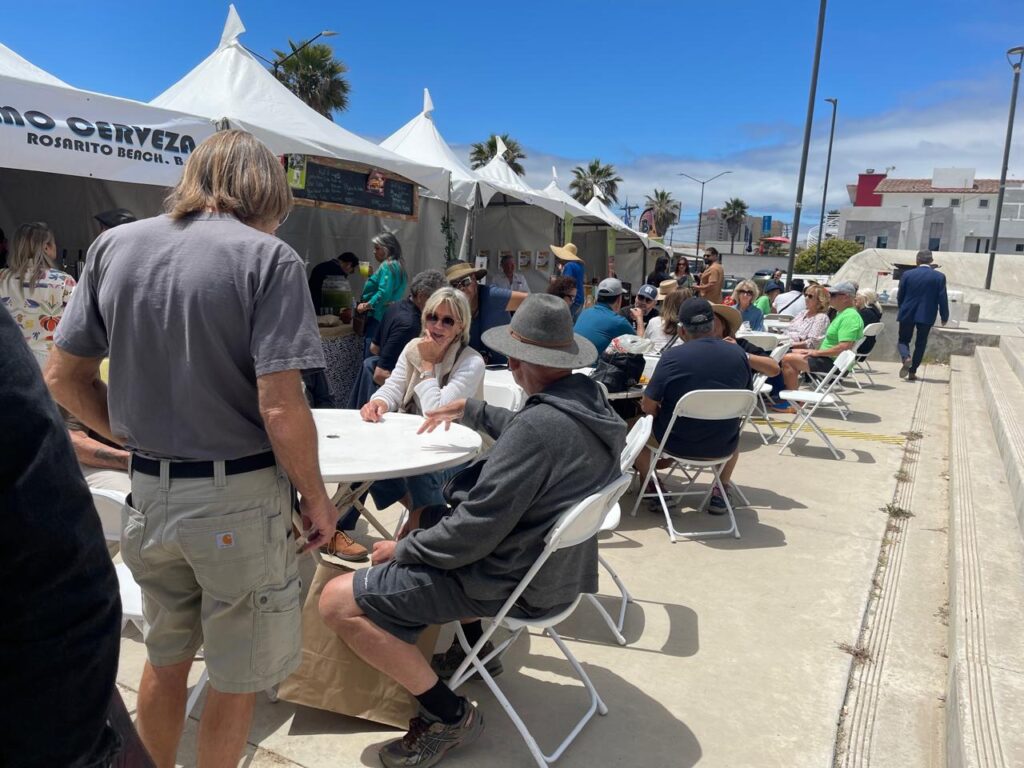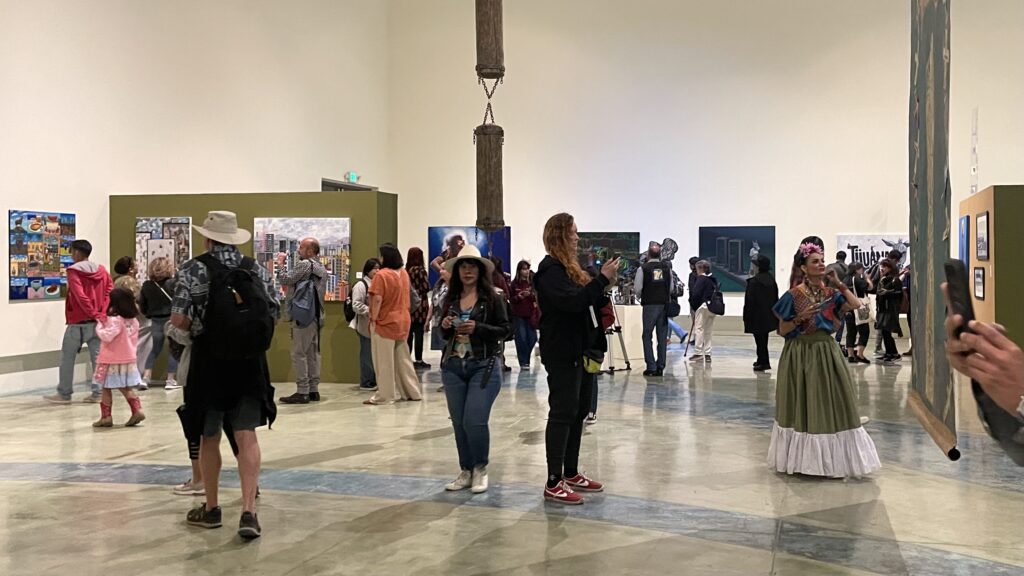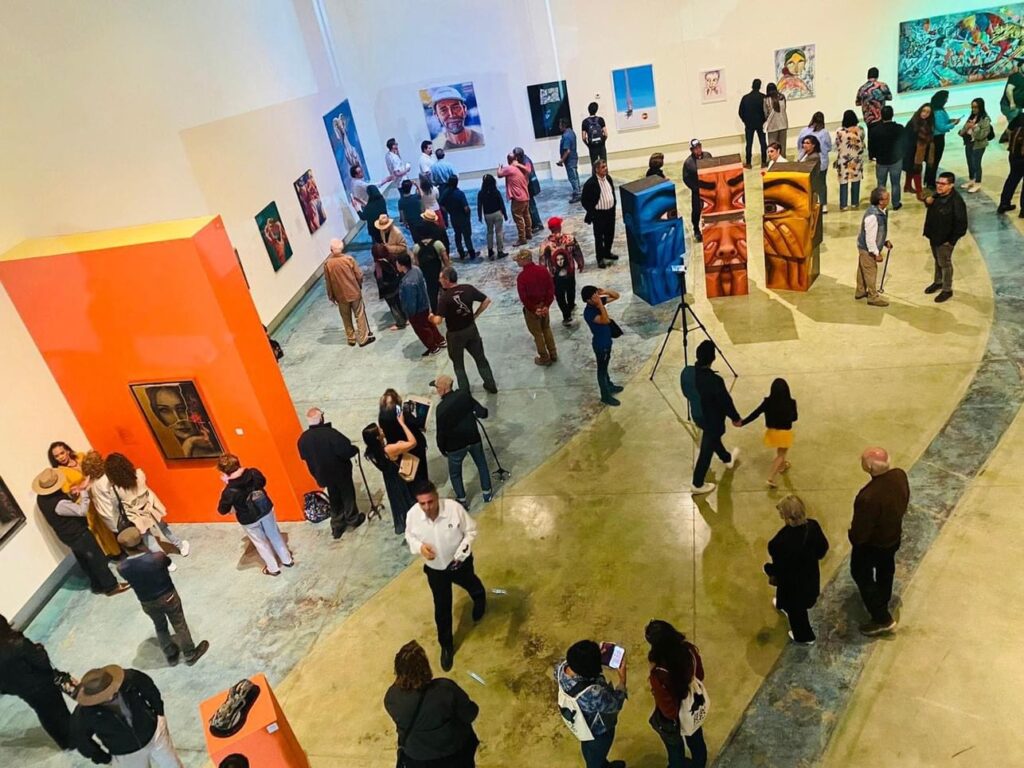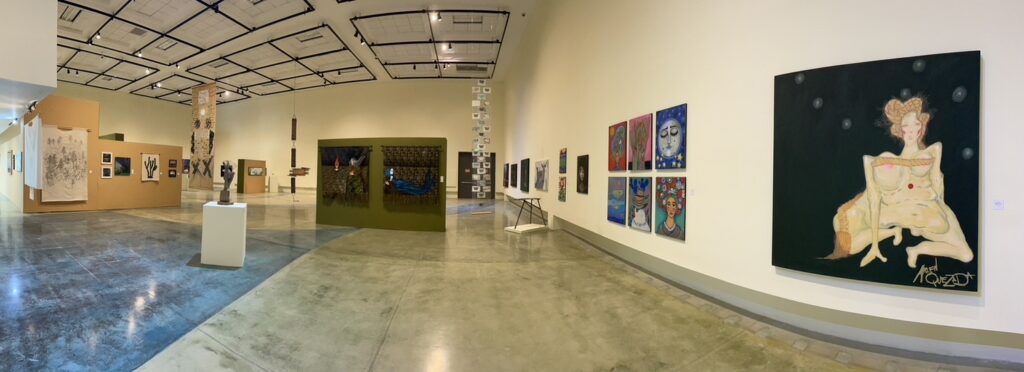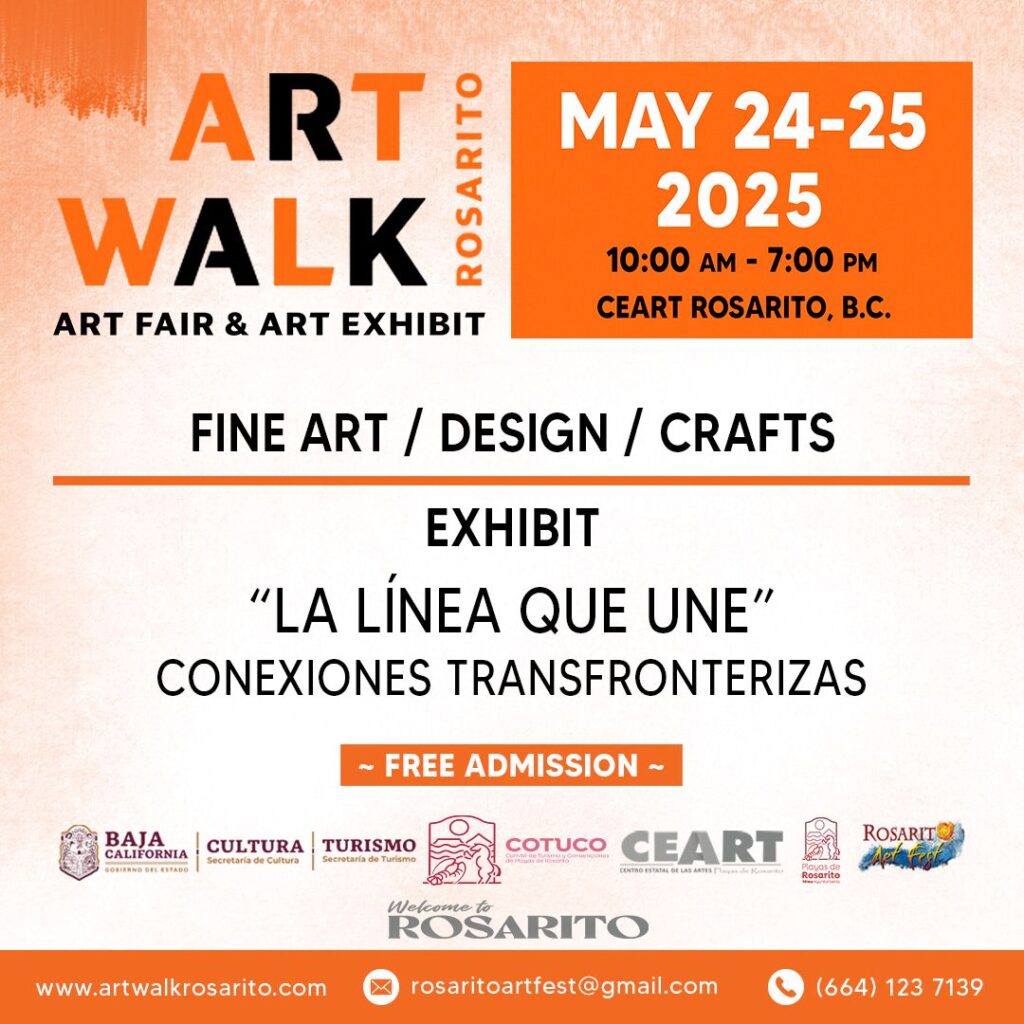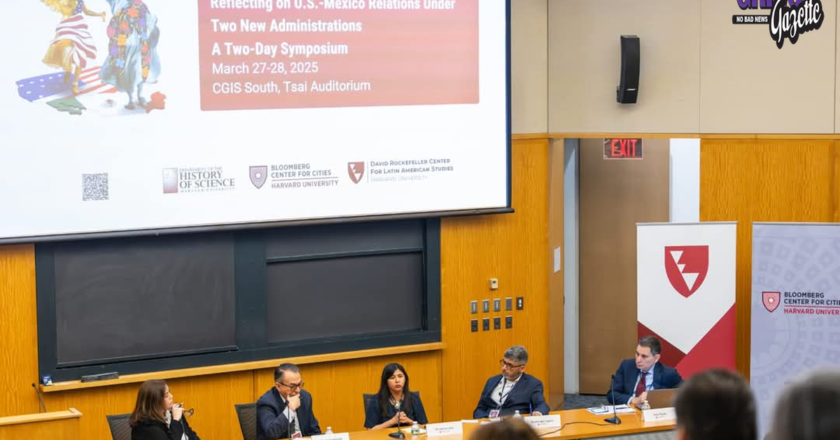Cancel your beach nap. You’ve got plans. Artwalk Rosarito returns May 24–25 at CEART Playas de Rosarito, and this year it’s not just another art fair—it’s a full-on cultural upgrade.
Originally a modest setup of scattered tents, the event has now evolved into a polished pavilion experience. That leap is thanks to the bold vision of Benito del Águila, a local artist turned cultural architect. His mission? Elevate Rosarito’s creative scene and give artists the platform they deserve.
So yes—Benito, we see you. Turning creative chaos into a structured, inspiring space takes more than talent. It takes guts and community spirit, and you’ve brought both.
Now, for those coming from the U.S., this is your Memorial Day weekend excuse to skip the BBQ and head south. Instead of traffic jams and outlet sales, you’ll get art, music, and color—just a quick ride from the border.
Art That Crosses Borders (Without a Visa)
At the heart of the event is the featured exhibition “The Line That Connects: Cross-Border Connections.” It brings together over 50 artists who explore what it means to live between worlds. Sculpture, painting, photography, and textiles all blend into a collective narrative—no passport required, just curiosity.
You’ll walk through works that speak not just to identity, but also to resilience, memory, and connection.
In addition to the visual spectacle, visitors can enjoy live performances, poetry readings, and an enigmatic gastronomic area. And yes, we said enigmatic. Will it be tacos? A churro? Something that comes wrapped in banana leaves or just bacon?
No spoilers here—but odds are your cravings will thank you.
To top it off, the music lineup promises a mix of soloists, orchestras, and folk ballet. Picture yourself listening to a string quartet while sipping agua fresca, surrounded by Baja’s boldest creativity. Doesn’t sound too bad, right?
The Real Star? Baja.
Big names like Francisco Javier Macías Rosales will definitely draw attention, but the real power of Artwalk lies in its range. It’s not about one headline artist. It’s about the 90+ creators showing up with paint, metal, textiles, and pure Baja soul.
Why go to L.A. for a gallery when Baja’s beating heart is creating masterpieces right here?
🗓️ Plan Your Weekend Like a Pro:
📍 CEART Playas de Rosarito
📆 May 24–25
🎟️ Free entry
🐾 Pet-friendly
🎨 90+ artists and countless reasons to show up
Final thought? Don’t just come for the sea view—come for the local vision.
Benito laid down the canvas. Now it’s our turn to bring the crowd.

